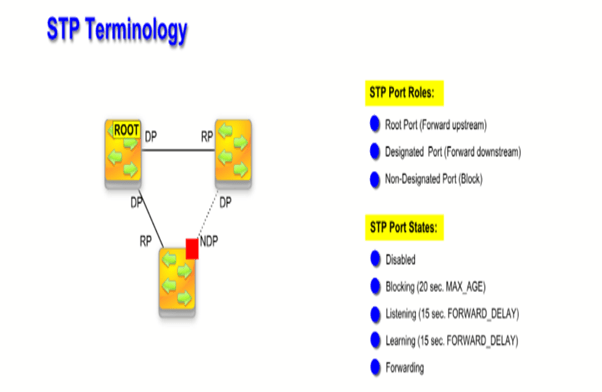How is Spanning Tree Protocol (STP) different from Resilient Ethernet Protocol (REP)
In this blog, we will learn about the comparison of STP & REP functionality. STP stands for Spanning Tree protocol and REP stands for Resilient Ethernet Protocol. These both are the layer 2 protocols that are used to prevent a loop in their respective domain network.
As we know, once the switch receives a frame on its switch port, it floods the frame to all other switch ports except where the frame is received. Usually, in a ring topology network, the switches get inter-connected with a trunk link. So, there is a high possibility to create a loop under such a scenario and thus the LAN network could be caused.
STP & REP are introduced to prevent such loops within a ring topology network. However, STP & REP can be compared on the following aspects.
Cisco Proprietary / Open Standard
REP is completely a cisco proprietary protocol whereas a few STPvariants are open standard i.e. PVST, RPVST, MSTP, etc.
Platform
REP is commonly supported on Stratix 5700, Stratix 8300/8000, IE2K, IE3K, IE4K, Catalyst 3750 switches.
STP is supported on Catalyst 3850, Catalyst 6500/6000, and Catalyst 4500/4000.
Topology
STP works on global topology whereas REP works on only segment topology. A segment is basically a group of ports configured in a chain with the same segment-id from one edge to another. In a segment, we have two edges i.e. Primary edge and Secondary edge. The primary edge from where we start the REP configuration and the secondary edge where we end.
Port Type
STP port types: Designated, Root, and Alternate.
REP port types: Primary, Edge, Transit, No-neighbour Primary, and No-neighbour.
Port States
STP port states: Blocking, Listening, Learning, Forwarding, and Disabled.
REP port states: Failed, Alternate and Open.

Convergence Time
STP usually takes 30 sec to come in a forwarding state whereas REP has its convergence time of 50 ms which is much faster than any STP variants.
Block Port Election
In STP & REP domain, there is an internal mechanism to elect a blocking port so that the loop can be prevented within the network.
STP elects DP, RP & Blocking port on the basis of Root Bridge election criteria. A switch will become a root bridge if it has the best Bridge-Id (lowest Base Mac add + Priority). All ports of the root-bridge switch will act as a DP. DP is a designated port that forwards the BPDU. The port which receives BPDU is called RP (Root Port). On a switch, no more than one port can become RP and the port opposite to RP cannot be RP. Similarly, the port opposite to DP can’t be DP. Hence, one of the ports in an STP ring topology will become a blocking port.
In the STP domain, we can make any switch as a Root-bridge by manipulating the priority value (By default priority is 32768).
REP elects Blocking port on the basis of Port-Id. The Port-Id is a combination of Base Mac-address and Interface port number. The switch with the highest base mac address and the switchport with a higher interface number will become the blocking port in the REP segment.
In the REP domain, manipulation is not possible as REP uses Port-Id for electing blocking port. Since the Port-id is a combination of (Base Mac-add + Interface number) that can’t be changed.
Limitations
As compare to STP, REP has a limited amount of redundancy such as it can only able to recover one link failure. If two links in a REP segment go down, there would be complete network loss.
Also, we can create the REP segment up to 24 switches only whereas there is no such limitation in STP.
We can’t run both STP and REP on an interface at a time. Once we configure the switch port in a REP segment, the STP gets disabled on that interface.
Since REP is completely a Cisco proprietary protocol, so it can be supported on Cisco switches only whereas there is no such limitation in STP.
Each switch in a REP segment has only two REP enabled ports whereas in the STP domain no such limitation.
We hope we are now very much clear about the basic functionalities and requirements of STP & REP in our LAN network. In this article, we also compared STP & REP and discussed their limitations. Although, both STP & REP play a vital role to keep the network loop-free. We have only included the theoretical part in this article. However, the configuration part is very simple and predictable.
Zindagi Technologies has proven its expertise for years in providing Campus LAN technology solutions in various enterprise and corporate networks in which STP and REP are some of the examples that help in avoiding loops. Zindagi Technologies has all its doors open to receive any solution requirements and we will be glad to support you. You can reach out to us at +919773973971.
Author
Sani Singh
Enterprise Networking Consultant
